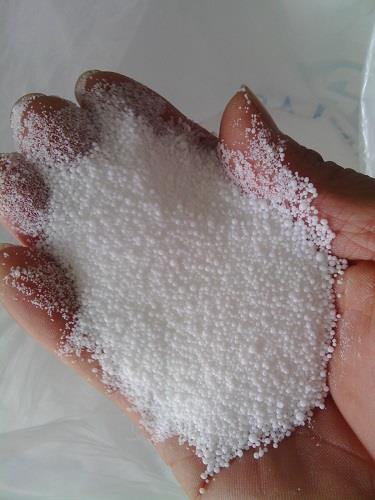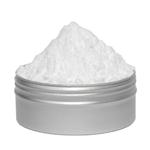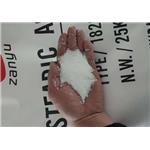Exploring the mysteries of stearic acid: An amazing journey from chemical molecules to widespread applications
Jul 3,2024
Introduction
In the vast field of chemistry, stearic acid has become one of the hot spots for scientists to explore because of its unique molecular structure and wide application fields. As a long-chain fatty acid, it not only plays an important role in daily life but also shows its unique charm in industrial production, medicine, cosmetics, and other fields. The purpose of this paper is to popularize the knowledge of stearic acid in an all-round way, from its chemical structure, production, physical properties, application fields, and other aspects of in-depth discussion, to lead readers to feel the scientific mystery behind it.

Chemical structure
Stearic acid, known chemically as octadecanoic acid and with the formula C18H36O2, is a colorless or yellowish solid. From the perspective of molecular structure, stearic acid is composed of an 18-carbon straight chain and a carboxyl group, and this unique structure gives it many unique properties. Stearic acid, a kind of fatty acid, is one of the main products of oil hydrolysis and widely exists in animal and plant oils.1
Production and preparation
Stearic acid is mainly produced by the method of oil hydrolysis. In industrial production, the commonly used oil and oil raw materials include animal and plant oil, hardened oil, and so on. Through hydrolysis, glycerides in fats are broken down into glycerol and fatty acids, including stearic acid. After the hydrolysis reaction, the high-purity product can be obtained through the steps of separation and purification.2
Physical properties
Stearic acid has a series of unique physical properties. First, it is a white or yellowish solid with a high melting and boiling point. This allows stearic acid to remain stable and less volatile at high temperatures. Secondly, it is insoluble in water, but easily soluble in organic solvents, such as ethanol, chloroform, and so on. This property makes it widely used in cosmetics, medicine, and other fields. In addition, it also has good lubricity, plasticity, and stability.3
Application areas of stearic acid
Plastics industry
Stearic acid is used as a plasticizer, stabilizer, and lubricant in the plastics industry. It can improve the flexibility and processing properties of plastics, making plastic products more smooth and durable.
Cosmetics industry
Stearic acid is used as an emulsifier, stabilizer, and softener in cosmetics. It can make cosmetics easier to apply, and absorb, and increase the stability and shelf life of products.
Pharmaceutical field
Stearic acid is used as a drug carrier, lubricant, and sustained-release agent in the pharmaceutical field. It can improve the solubility and bioavailability of drugs, making drugs more easily absorbed and utilized by the body.
Food industry
Stearic acid is used as a food additive, emulsifier, and stabilizer in the food industry. It can improve the taste of food, extend the shelf life, and increase the nutritional value of food.
Other fields
Stearic acid is also widely used in rubber, textile, paint coatings, and other fields. Used as a rubber vulcanization accelerator in the rubber industry; In textile industry can be used as a fiber softener and antistatic agent; It is used as a pigment dispersant and thickener in the paint and coating industry.4
Environmental impact and sustainable development
With the improvement of environmental awareness, the environmental impact of stearic acid has also become the focus of attention. Although stearic acid is widely used in industrial production, environmental problems such as waste and wastewater that may be generated in its production process cannot be ignored. To reduce the impact of production on the environment, scientists are actively developing new production processes and technologies, such as green chemistry technology and circular economy models. These new technologies aim to reduce waste generation and emissions, improve resource efficiency, and achieve sustainable development.5
Future Outlook
With the continuous progress of science and technology and the improvement of people's requirements for quality of life, the application field of stearic acid will be more extensive. In the future, scientists will continue to deeply study the chemical properties and application properties of stearic acid, and develop more efficient, environmentally friendly, and multi-functional stearic acid products. At the same time, with the promotion and application of the concept of green chemistry and sustainable development, the production process will also be more environmentally friendly and sustainable.
Conclusion
Stearic acid, as an important chemical substance, has been widely used in many fields such as chemistry, industry, medicine, and cosmetics. Through the introduction of popular science in this paper, we can have a deeper understanding of its chemical structure, production and preparation, physical properties, and application fields. At the same time, we should also pay attention to environmental issues in the production process and actively promote sustainable development. Let us look forward to stearic acid in the future can play a greater role in human life and industrial production to bring more beauty.
References
[1].Habib, N.; Wood, C.; Apostolov, K.; Barker, W.; Hershman, M.; Aslam, M.; Heinemann, D.; Fermor, B.; Williamson, R.; Jenkins, W., Stearic acid and carcinogenesis. British journal of cancer 1987, 56 (4), 455-458.
[2].Mensink, R. P., Effects of stearic acid on plasma lipid and lipoproteins in humans. Lipids 2005, 40 (12), 1201-1205.
[3].Sampath, H.; Ntambi, J. M., The fate and intermediary metabolism of stearic acid. Lipids 2005, 40 (12), 1187-1191.
[4].Bonanome, A.; Grundy, S. M., Effect of dietary stearic acid on plasma cholesterol and lipoprotein levels. New England Journal of Medicine 1988, 318 (19), 1244-1248.
[5].Kris-Etherton, P. M.; Griel, A. E.; Psota, T. L.; Gebauer, S. K.; Zhang, J.; Etherton, T. D., Dietary stearic acid and risk of cardiovascular disease: intake, sources, digestion, and absorption. Lipids 2005, 40, 1193-1200.
- Related articles
- Related Qustion
P-nitrobenzoic acid, commonly used as an intermediate in organic synthesis, is involved in the manufacture of a variety of chemicals and materials.....
Jul 3,2024APIDiphenylphosphine excels in catalysis by customizing reaction pathways and in water treatment by creating durable, high-capacity adsorption materials for pollutants.....
Jul 3,2024APIStearic acid
57-11-4You may like
- Stearic acid
-

- $1100.00 / 1metric tonnes
- 2024-07-22
- CAS:57-11-4
- Min. Order: 1metric tonnes
- Purity: 99%
- Supply Ability: 100tons
- Stearic Acid
-

- $35.00/ kg
- 2024-07-21
- CAS:57-11-4
- Min. Order: 1kg
- Purity: ≥98%
- Supply Ability: 3000tons/month
- Stearic acid
-

- $6.00 / 1KG
- 2024-07-10
- CAS:57-11-4
- Min. Order: 1KG
- Purity: 99%
- Supply Ability: 20TONS




